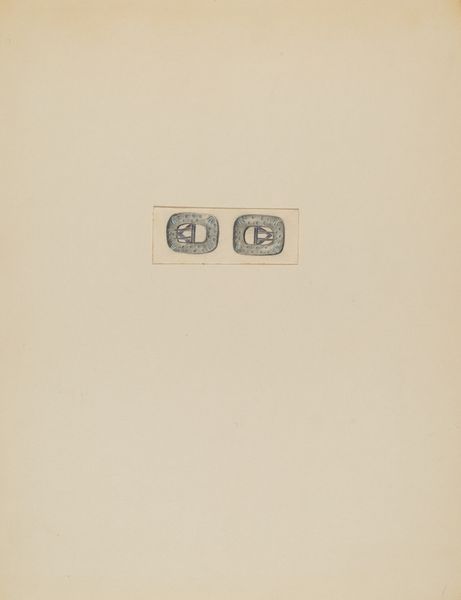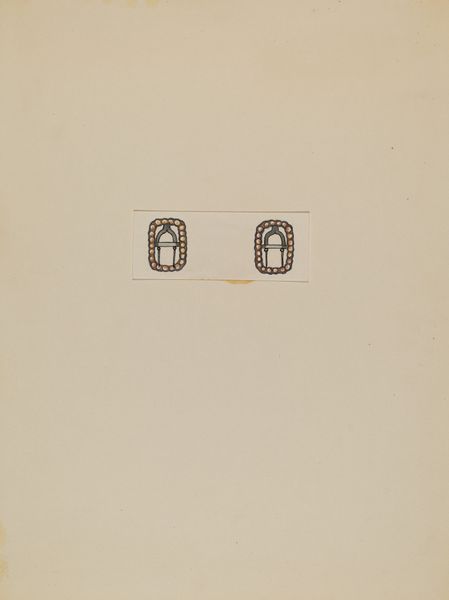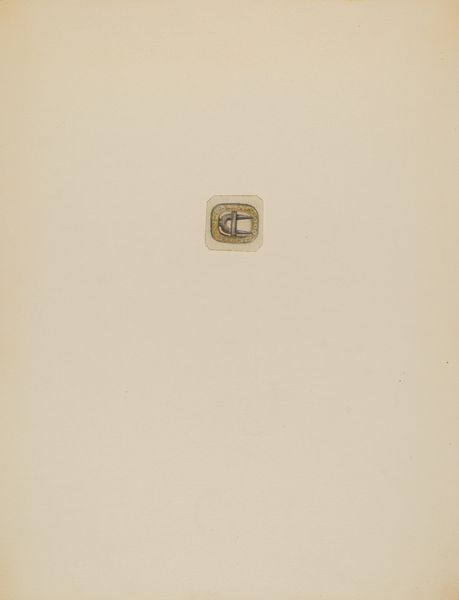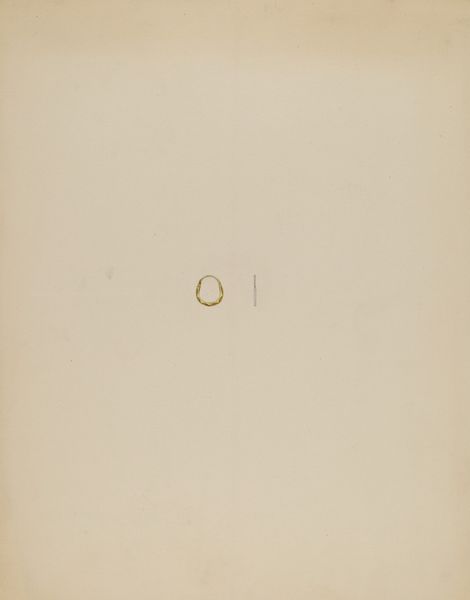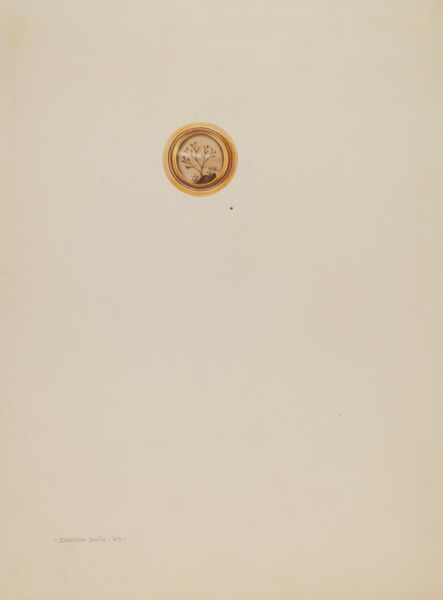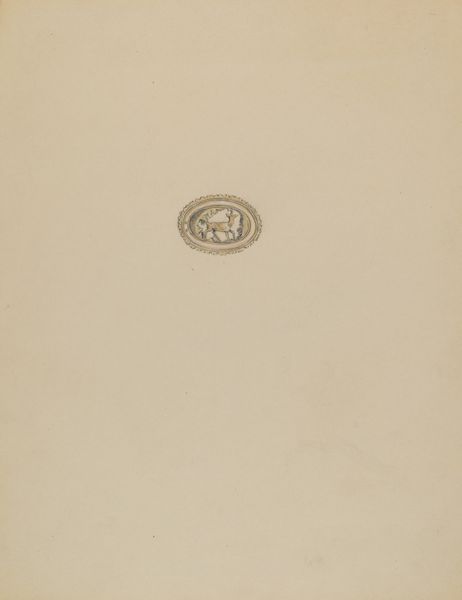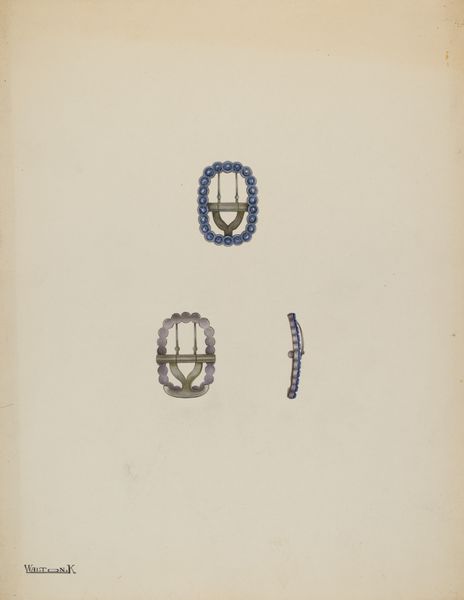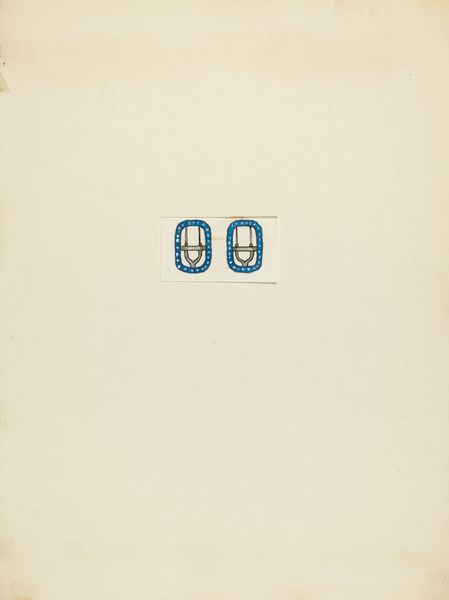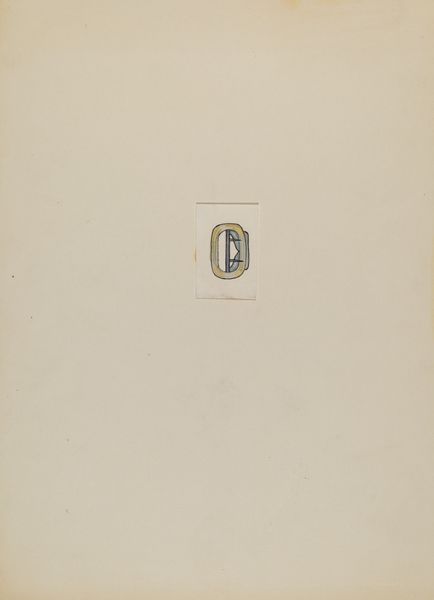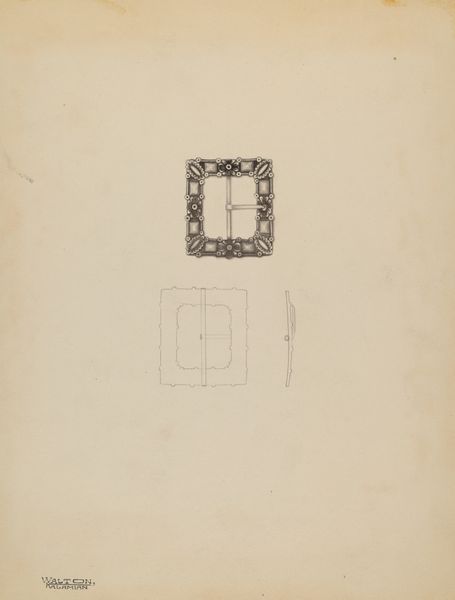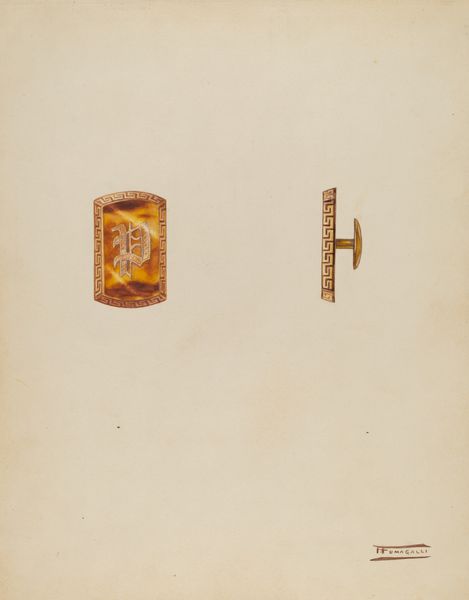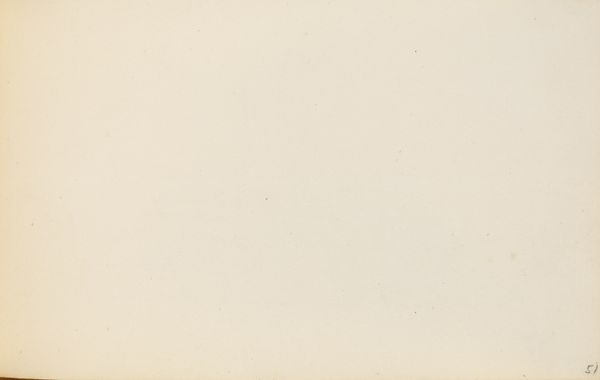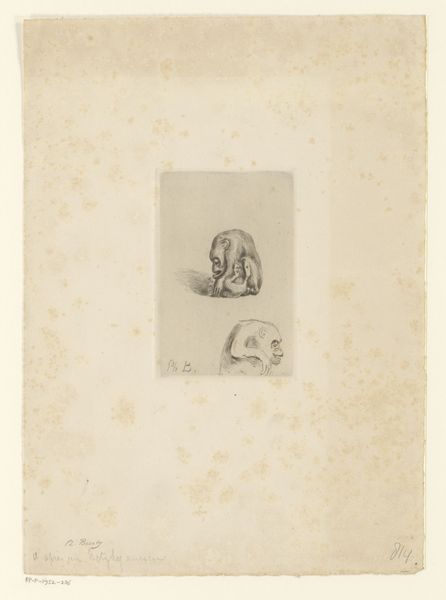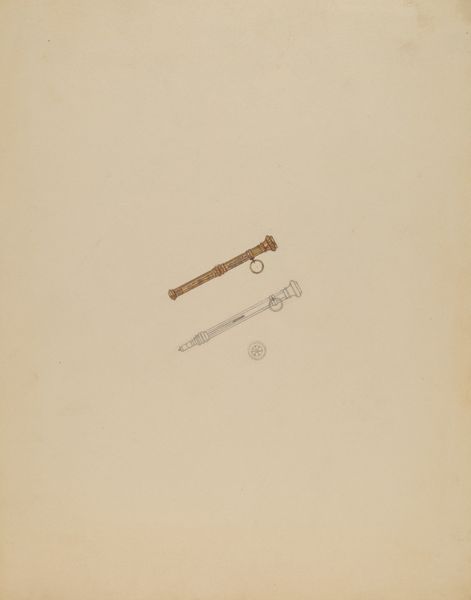
drawing, watercolor, pastel
#
art-deco
#
drawing
#
water colours
#
pastel soft colours
#
muted colour palette
#
watercolor
#
pastel
#
soft colour palette
#
watercolor
Dimensions: overall: 30.2 x 22.9 cm (11 7/8 x 9 in.)
Copyright: National Gallery of Art: CC0 1.0
Curator: These "Gentleman's Stock Buckles," dating from around 1936 by Charles Criswell, whisper elegance across time. Editor: My first impression? Delicate, almost ghostly. They look like faded memories pressed onto the paper. Curator: Indeed, the watercolor and pastel medium contributes to that ethereal quality. Each buckle is presented as a small, self-contained study, allowing us to focus on the subtle details of their design. The artist uses soft, muted colours, particularly in rendering the textures of metal. I find the symmetry both grounding and fascinating, given their diminutive size. Editor: For me, it’s less about symmetry, more about… longing? I mean, buckles! So formal, so… bygone. The art deco style just emphasizes that feeling. And the almost complete emptiness of the page amplifies the stillness. Makes me wonder what the rest of his closet must have been like. Curator: The buckles become emblems of that bygone era, embodying its aspirations to streamline modernity with classical elegance. Art Deco’s emphasis on clean lines and geometric forms certainly fits that narrative. I wonder about his intentions; maybe it was a preliminary sketch or a decorative flourish? The composition isn't highly involved, after all. Editor: Or perhaps he saw more than just functional objects. A gentleman’s buckle reflects a way of life, no? A way of being in the world. Each careful stroke becomes almost an act of remembering. An embrace of the sartorial spirit of that time. He’s not simply rendering form; he’s hinting at the life it represents. Maybe the absence on the canvas around the buckles isn’t emptiness but a respectful negative space. Curator: Perhaps. Looking at them anew, I notice how he teases depth. Light and shadow become form; it adds to their three-dimensionality despite the watercolour medium’s tendencies toward flatness. The muted tones, when paired with the composition of negative space you noted, do become, effectively, a portal to understanding 1930s gentlemen’s attire and a whole different type of formal engagement with self presentation. Editor: Exactly! Charles Criswell gives us so much through so very little. Those subtle textures really speak volumes, wouldn't you agree?
Comments
No comments
Be the first to comment and join the conversation on the ultimate creative platform.
